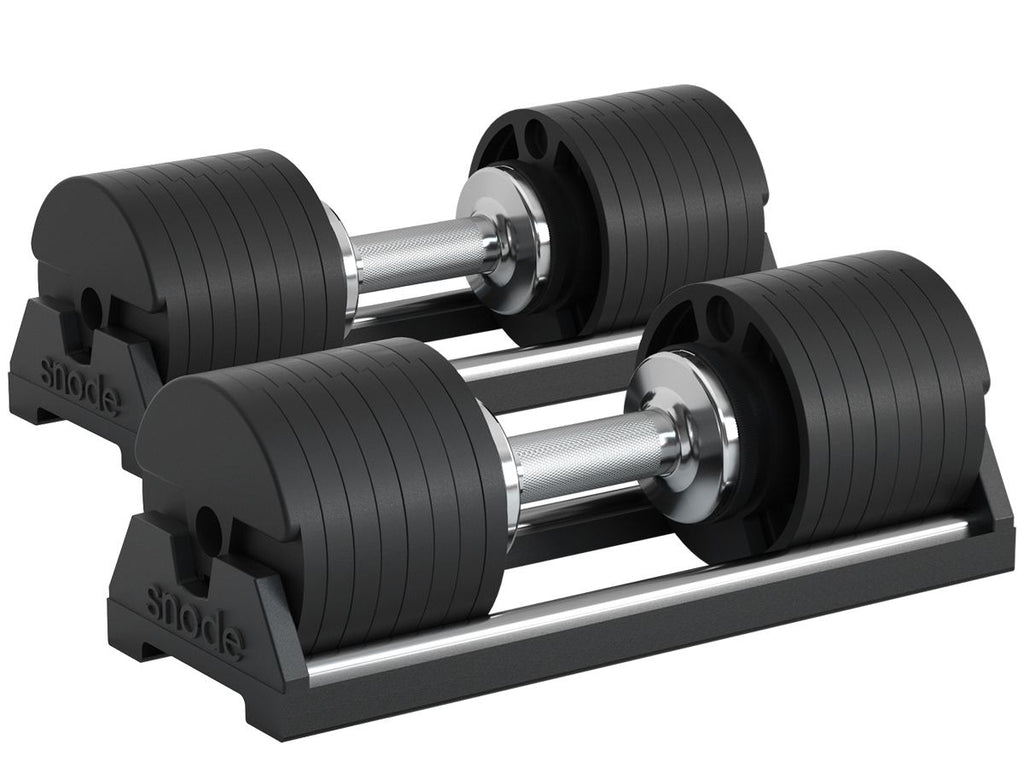Are Dumbbells a Good Way to Build Muscle?
Dumbbells are one of the most popular and versatile strength training tools available. Free weights like dumbbells have long been used by bodybuilders, strength and power athletes, and casual gym-goers alike to build muscular strength, size, and endurance more effectively than bodyweight exercises alone. But with many choices across adjustable, spin-lock, and fixed types, are dumbbells an ideal option specifically for building lean muscle mass?

Benefits of Using Dumbbells to Build Muscle
Dumbbells offer several distinctive advantages for stimulating lean muscle fiber growth across the body compared to limited-range barbells, fixed pathway weight machines, or bodyweight training alone. The primary muscle-building upsides dumbbells provide include:
Targeted Development
The inherent versatility of handheld dumbbells allows lifters to isolate muscle groups much more discretely than other equipment. Simply adjust grip widths, arm trajectory angles, and range of motion freedom to emphasize metabolically stimulating particular heads, such as the front deltoids, over ancillary surrounding tissues that commonly get overworked. This elicits greater mechanical tension intensity and metabolic stress, both prompting more direct hypertrophy stimulus to the intended muscles.
Unilateral Focus
Split training with an individual dumbbell in each hand also forces weaker or imbalanced sides to work independently matching stronger arms without compensation possibilities. This builds balanced lean mass evenhandedly, filling functional strength voids. Unilateral dumbbell moves also inherently demand greater core bracing engagement to control weights, shifting unique centers-of-gravity when lunging or during overhead presses. This secures the back, protecting spine health.
Full Range of Motion
Unlike fixed straight pathway barbells or restrictive machines, lifters using dumbbells can better control speed and trajectory personalized to their own specific joint health limitations, muscle leverages, and strength capabilities. This allows safely manipulating dumbbells through fuller movement arcs, placing maximal isolated tension on target muscle groups through complete contractions. The focused time under tension magnifies micro-damage signaling pathways, prompting subsequent increased hypertrophic adaptations during rest periods.
Reduced Injury Risk
The wrist and elbow alignment freedom when grasping independent dumbbells also reduces overuse injury risks associated with locked vertical bar paths constraining natural motions under increasingly heavy loads. Using dumbbells also avoids hazardous compressive and shear forces transmitted along fixed barbell spinal axes by enabling proper kinetic chain sequencing and back health through balanced fluid movements.
The combination of strength curve autonomy, focused mechanical loading variables, reduced injury risks, and logistical conveniences clearly confirms that properly formulated dumbbell-based training represents an extremely effective muscle-building approach to optimizing results.
Should You Choose Fixed or Adjustable Dumbbells?
If committing to a dumbbell system for muscle growth, choose between traditional fixed weights of single mass or modern adjustable designs delivering weight flexibility via collars and plate loading integrated within compact, ergonomic handles. Considerations around storage, budget, and versatility factor prominently:
Available Space
Fixed dumbbells consume extensive storage for fuller collections of 5 to 50+ pounds, appealing to commercial gyms with abundant racks. Adjustable dumbbells condensing 10+ weights into single high-tech units favor space-limited home settings.
Upfront Costs
Adjustable dumbbells might appear expensive at first glance, with prices starting around $250, but they are more cost-effective compared to fixed-weight dumbbell sets, which can exceed $700. Additionally, fixed-weight sets lack the versatility of adjustable ones, as you are confined to the specific weights available in stores.
Workout Variety
Fixed dumbbell sets force combinations of available weights, possibly limiting incremental progressions. However, adjustable types featuring pin or dial settings offer more up-to-10-pound gradations, ensuring gradual gains overcoming strength plateaus steadily. Moreover, adjustable dumbbells feature a wide range of weight choices, making it a good choice for pros to pursue more advanced fitness goals.
For dedicated muscle building employing proper training principles, space-saving adjustable dumbbell systems prove the most versatile and scalable strength equipment investment in both the short and long term.
Know more about adjustable dumbbells: What Size Dumbbell Should a Beginner Start With?
Final Words
Dumbbells are unmatched in flexibility, safety, and their ability to focus on specific muscle groups, outshining multi-purpose gym equipment. They come in adjustable and fixed types, making them suitable for everyone, from beginners to advanced lifters, aiming for finely tuned muscle development through unique grip positions that target different muscles.
To get real benefits, combine dumbbells with a proper workout split and gradually increase your challenges. Significant gains in muscle size and strength are possible for those committed to this approach, especially if it's paired with a protein-rich diet and enough rest to help stressed muscles grow.
Remember to maintain proper form during your exercises to prevent injuries, especially when lifting heavier weights. If used correctly and consistently, dumbbells can help you achieve the strong, well-defined body you're aiming for.



Leave a comment